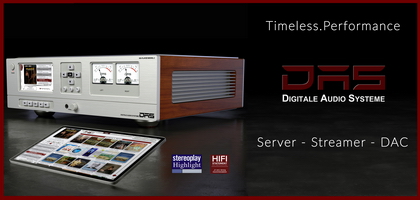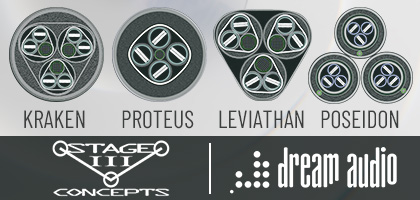No. 242 July 2024
- COVER REVIEW: Ferrum WANDLA GOLDENSOUND EDITION ⸜ digital-to-analog converter » POLAND
- AUDIO SHOW ⸜ coverage: HIGH END 2024 ⸜ Munich » GERMANY
- REVIEW: Daniel Hertz MARIA 350 ⸜ integrated amplifier » ITALY
- REVIEW: Lumin P1 MINI ⸜ file player » HONG KONG
- REVIEW: Thunder Melody AC FEMTO BLACK (2024) ⸜ AC power cable » POLAND
- REVIEW: Laiv HARMONY DAC ⸜ digital-to-analog converter » SIGAPORE
- MUSIC ⸜ review (in Polish): Three Blind Mice: KOSUKE, MOTOHIKO, YAMAMOTO ⸜ remaster 2024 • SACD/CD » JAPAN
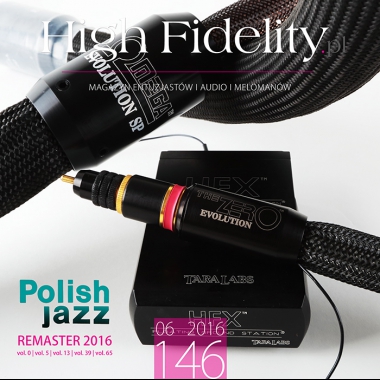

|

|
|
12” x 12” 
The first cover arts for the Polish Jazz series were designed by Rosław Szaybo: Zbigniew Namysłowski Quartet, Polish Recordings "Muza", XL 0305 (1966) | Polish Jazz vol. 6
Nine years passed since then, and the question still remains valid. Maybe even they gained weight, because then we didn't know how the situation with vinyl records would develop – it could have gone either way. Despite the fact that year to year sales increase of records was significant, it was unknown whether it was a temporary or a permanent trend. Today we know that it was an upward trend that back shot an LP record to mass culture, but I raised its position also up. Today, listening to music from a vinyl is like a declaration of belonging to an exclusive club of people, who know "better". Using vinyl records and turntables in movies and TV series is trendy again – let me mention just few Polish productions: Letters to the M2 (dir. Maciej Dejczer, 2015), or A second chance (dir. Michael Gazda, Łukasz Kośmicki, 2016) . 
Joaquim Paulo, Ed. Julius Wiedemann Jazz Covers, Tashen, Köln 2012 – an album including best jazz covers In a previous life of music, labels hired art directors who were responsible for designing or selection of designers for each label; in Polish Nagrania it was Stanisław Żakowski. Poles have left their impression, however, not only in Polish music. I'd like to recall first of all two names in this context: Stanisław Zagórski and Rosław Szaybo. Both are known as the authors of posters, and Stanislaw Zagórski is often said to be a 'co-father' of the Polish School of Poster. They translated these experiences brilliantly to another form of commercial art, ie. 12 x12 inches cover arts. Both men knew each other, and as Mr Zagórski said in an interview for "Culture.pl": We met in the poster studio run by Henryk Tomaszewski. I immediately liked Rosław. Great guy, intelligent, clever, and besides terribly sociable. We started to meet after classes, we went together for lunch. Not only the two of us, because we were a larger group. We were inspired by each other and supported each other. Their history in the 2013 film Przyjaciele na 33 obroty was presented by Grzegorz Brzozowicz, and between 2nd and 15th of May the same year Kordegarda art gallery in Warsaw prepared an exhibition Stanislaw Zagorski - Rosław Szaybo, Exhibition of Vinyl Records Cover Art. 
The Modern Jazz Quartet, The Sheriff (1963) | designed by Stanisław Zagórski After an emigration to USA in 1963 it was only confirmed that the imagination of Mr. Stanislaw was unusual. Already his second order, which a music critic Roman Waschko helped him to get was a cover for Atlantic Records for The Modern Jazz Quartet's album The Sheriff (1963). Nesuhi Ertegun, who with his brother (of Turkish origin), founded the label gave him a chance and our compatriot kept worked for this company until 1990s. During this time he designed covers for Aretha Franklin (Young, Gifted & Black, 1972 ), Roberta Flack (First Take, 1969), Velvet Underground (Loaded, 1970) Cream (Live Cream Volume II, 1973), Cher, Miles Davis, Carmen McRea (The Sound Of Silence, 1968), Billy Cobham (Spectrum, 1973), Charles Lloyd, Michal Urbaniak and many others. At the same time he carried out jobs for Columbia Records. This chapter of his life is less known, because - as he said - at that time the studio was extremely conservative and working for it resembled craftsmanship. 
Aretha Franklin, Young, Gifted & Black (1972) | designed by Stanisław Zagórski His friend, Rosław Szaybo, born in Poznań, three years later emigrated to London. He also quickly found his place there, as already in 1968 he became an artistic director in an advertising agency Young & Rubicam, and since 1972 he worked as the artistic director of the phonographic company CBS Records Great Britain, for which he designed approx. 2,000 cover arts. Among his projects I have to name the iconic cover for the Judas Priest and their album British, the one with a razor blade in a hand , as well as the debut album of The Clash. Other artists he worked with were: Chicago (If You leave Me Now, 1976), Mott the Hoople, Elton John, Roy Orbison, Carlos Santana, Janis Joplin, Simon & Garfunkel and others (more on "culture.pl"). 
Judas Priest, British Still(1980) | designed by Rosław Szaybo Interestingly, Szaybo's works were not included in the prestigious two-part album released by Tashen Jazz Covers (Joaquim Paulo, Ed. Julius Wiedemann, Köln 2012). This is a collection of the most interesting jazz cover arts, which also contains short notes about their authors and artists, interviews with people responsible for the recording and production of these albums. Among three cover arts placed on the box that one puts this album in there is one of Krzysztof Komeda's album Komeda Jazz Vol. 1 with a photo taken by an artist, Marek Karewicz. This way we close a full circle and we are at home. Marek Karewicz is an author of the overwhelming number of cover arts for Polish big beat and rock groups, and above all jazz ones. He's an artist photographer, born on January 28th 1938 in Warsaw, he created more than 1,500 cover arts. Everybody knows them, even if they don't know it. He designed for Niemen, Breakout, Czerwone Gitary, Niebiesko-Czarni, Skaldowie, No To Co – one can find in his portfolio every artist who in any way make his own impression on Polish rock or pop music. 
Breakout, Blues, Polskie Nagrania „Muza”, SXL 0721 (1971) | designed by Marek Karewicz |
And yet, as he himself said, he did not really like rock and rock'n'roll, which in Poland was called Big Beat, and it was jazz that was the love of his: Among the great personalities of jazz I never had a chance to photograph only one man, but the greatest of them all - Louis Armstrong. [...]
The greatest professional satisfaction for me was an invitation from Miles Davis, who even sent me, using Marek Olko as intermediary, one of his famous jackets. [...] He played the last tour and wished for me to accompany him with my camera. [...] I did not know that at the time, but apparently my photographs were displayed on the entire wall of one of New York's skyscrapers. Pawel Brodowski, chief editor of the "Jazz Forum" magazine in the preface to the photo album This is Jazz with photograms by Karewicz adds, that in his archive there is the entire history of Polish jazz hidden and the pantheon of the biggest stars, and he himself is a living legend of this music (Sopot 2012, p. 5). As I mentioned, the cover art with a photo of Komeda was included in the Jazz Covers album. There was a certain misunderstanding involved in this story. In the album this cover art was presented as published in 1960 by Polskie Nagrania "Muza". There is no absolutely reliable information on the subject, but Discogs says that these two - Vol. 1 and Vol. 2 - albums were pressed in 2007 in Japan under catalog numbers WOLP2501 / 2502 with the name WOOPIE Music as publisher. And indeed, there are stickers on the covers saying that a distributor for this country is Norma. The albums are actually a compilation of 10 "releases of 1960 and 1961 which were a sound chronicle of the Jazz Jamboree festival. Nothing is really known about who designed the cover. 
Michał Urbaniak Constellation, In Concert, Polskie Nagrania „Muza”, SX 1010 (1973) | Polish Jazz vol. 34 | designed by Marek Karewicz The photo by Karewicz is doing its job, though. In the same album we can find something more, as many as four Polish jazz records cover arts - two belonging to the most important series for Polish music, Polish Jazz: In Concert by Michal Urbaniak Constellation (vol. 34, 1973), Open Piano by Adalbert Kaminski (vol. 66, 1981), Rien Ne va Plus by Novi Singers (1973) and Easy by Wojciech Karolak (1974). With a total number of 76 albums, the Polish Jazz series appearing since 1963 (Warsaw Stompers, New Orleans Stompers, vol. 1) till 1989 (Lora Szafran, Lonesome Dancer, vol. 76) is the longest-published release in the history of world music, and thus a chronicle of Polish jazz. Almost all of the cover arts for the series were designed by Marek Karewicz and he has provided them with pictures he took. 
Krzysztof Komeda Quintet, Astigmatic, Polskie Nagrania „Muza”, XL 0305 (1966) | Polish Jazz vol. 5 | designed by Rosław Szaybo, photo Marek Karewicz – here a advertisement of the new Warner Music Poland remaster But not all of them. Co-creator of the series was Mr. Rosław Szaybo, the one I began this text with. He is also an author of a series' recognizable logo. He was an author of the cover art for the most important Polish jazz album, which is part of world's jazz canon: Astigmatic by Krzysztof Komeda. The ASTIGMATIC was released originally in 1966 (vol. 5),same year when he (Rosław Szaybo) left for London and was it was the penultimate cover art he designed for the Polish Jazz. Previously he prepared cover arts for vol.1-5 and 7, so among others for the Polish Big Band (vol. 2, 1965) and Polish Jazz Quartet (vol. 3, 1965). For that purpose he used, which surely did not come as a surprise, photographs made by Mr. Karewicz. After vinyl The times when music and graphics constituted a whole together seemed to be a thing of the past. Vinyl comeback has created a chance to transfer at least a small part of this unique symbiosis to the future. This, of course, will not be the same world, but vinyl has taken root in the mass consciousness again. Even more so now, when the musicians themselves are beginning to demand to be released also on this medium; partially because of nostalgia, some others due to snobbery, but a large part believes that this is the best way of presenting their achievements. In the main article of the "Gramophone" magazine of May 2016, the magazine - let us add – that has been on the market since 1923, one reads:
After all, the return of vinyl is means a comeback of the whole ritual, which accompanies, eject the disc from the cover, set the stylus, put on side B - all this requires a kind of devotion, which is a tribute to the performers, and even the music itself. This ritual also involves watching, admiring and commenting on the cover arts. Fortunately, this specific art did not die along with the digital revolution. 
Baasch, Corridors, Nextpop 0825646192373 (2015) | designed by Jędrzej Guzik After 1980 Mr Szaybo began to design posters for Polish theater and music institutions. He came back to Poland for good in 1993 and since then he headed the Studio of Creative Photography at the Faculty of Graphic Fine Arts in Warsaw. In 2002 he received a title of professor. He still actively creates contemporary Polish culture. In 2014, Arsenal Municipal Gallery of the city of Wroclaw launched a competition "30/30" for the best cover art. Mr Szaybo was chosen for a Chairman of the jury, consisting of representatives of the music industry and graphic designers. Of the 182 applications it chose 30 best projects, and the results were announced on June 5th at the exhibition. Find an alphabetical list of these project below: 1. Baasch, Corridors (author: Jędrzej Guzik), 
Kixnare, Rotations”, U Know Me Records – UKM 035 (2014) | designed by: Maciej „Animisiewasz” Grochot 16. Marek Walarowski Trio, Seven Stairs to Hell (author: Artur Jarzęcki), WOJCIECH PACUŁA |
About Us |
We cooperate |
Patrons |
|
Our reviewers regularly contribute to “Enjoy the Music.com”, “Positive-Feedback.com”, “HiFiStatement.net” and “Hi-Fi Choice & Home Cinema. Edycja Polska” . "High Fidelity" is a monthly magazine dedicated to high quality sound. It has been published since May 1st, 2004. Up until October 2008, the magazine was called "High Fidelity OnLine", but since November 2008 it has been registered under the new title. "High Fidelity" is an online magazine, i.e. it is only published on the web. For the last few years it has been published both in Polish and in English. Thanks to our English section, the magazine has now a worldwide reach - statistics show that we have readers from almost every country in the world. Once a year, we prepare a printed edition of one of reviews published online. This unique, limited collector's edition is given to the visitors of the Audio Show in Warsaw, Poland, held in November of each year. For years, "High Fidelity" has been cooperating with other audio magazines, including “Enjoy the Music.com” and “Positive-Feedback.com” in the U.S. and “HiFiStatement.net” in Germany. Our reviews have also been published by “6moons.com”. You can contact any of our contributors by clicking his email address on our CONTACT page. |




 |
     |
main page | archive | contact | kts
© 2009 HighFidelity, design by PikselStudio,
projektowanie stron www: Indecity




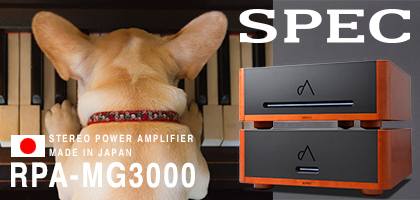
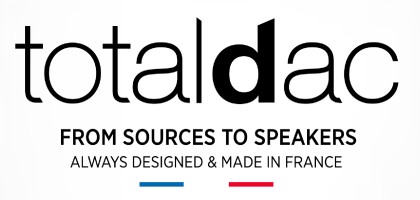

 ne of the advantages of 12'' Long Play is its large, often interesting cover. Buying albums because of their cover was something quite normal, I did it myself many times and thus I discovered music, which I would never have reached for if it wasn't for the cover that caught my attention, and that more than once turned out to be an interesting and important. It is hardly surprising that there are many who return to vinyl as an important musical medium that allows them to satisfy their need for a visual "identification" of the album. It is also a sort of return to a kind of art, which covers arts were in the past, and to associating music with the (fixed) image. Quite rightly in the headline of the Priceless joy of a nice boxarticle Ms Marta Strzelecka wrote: "Does today - during the Internet and iPods era – anyone even care how the cover arts look like and what they represent? How are they designed these days? After all, we still expect visual associations with music. "(" Gazeta Wyborcza ", Aug. 22nd 2007, p. 13).
ne of the advantages of 12'' Long Play is its large, often interesting cover. Buying albums because of their cover was something quite normal, I did it myself many times and thus I discovered music, which I would never have reached for if it wasn't for the cover that caught my attention, and that more than once turned out to be an interesting and important. It is hardly surprising that there are many who return to vinyl as an important musical medium that allows them to satisfy their need for a visual "identification" of the album. It is also a sort of return to a kind of art, which covers arts were in the past, and to associating music with the (fixed) image. Quite rightly in the headline of the Priceless joy of a nice boxarticle Ms Marta Strzelecka wrote: "Does today - during the Internet and iPods era – anyone even care how the cover arts look like and what they represent? How are they designed these days? After all, we still expect visual associations with music. "(" Gazeta Wyborcza ", Aug. 22nd 2007, p. 13).

